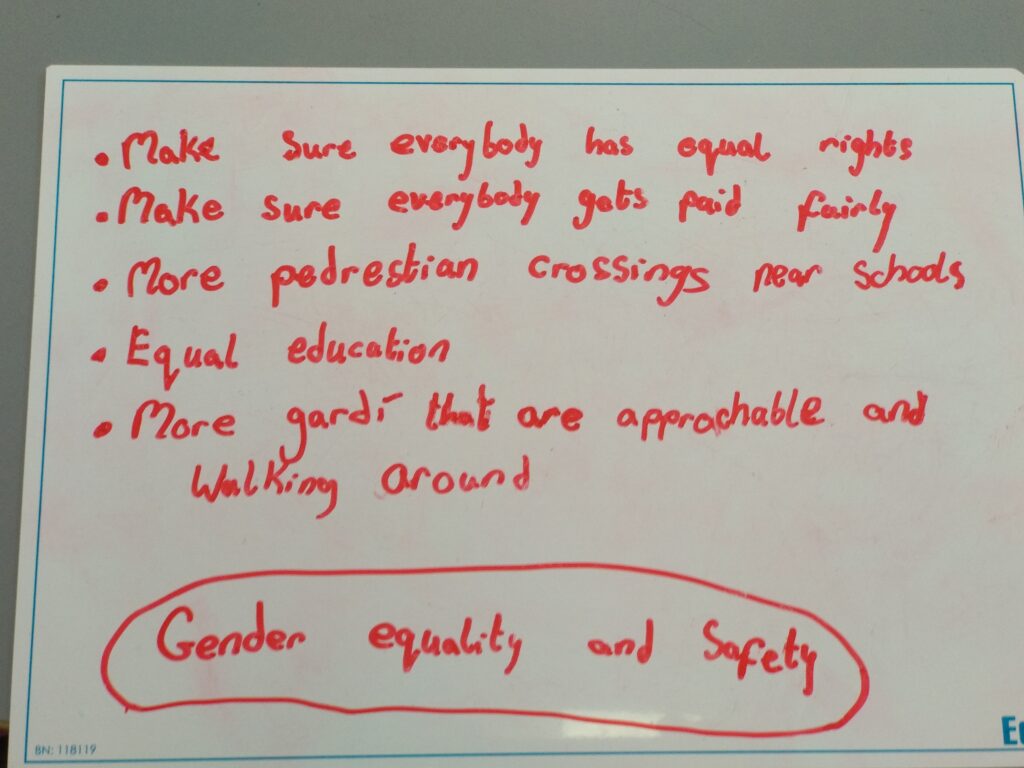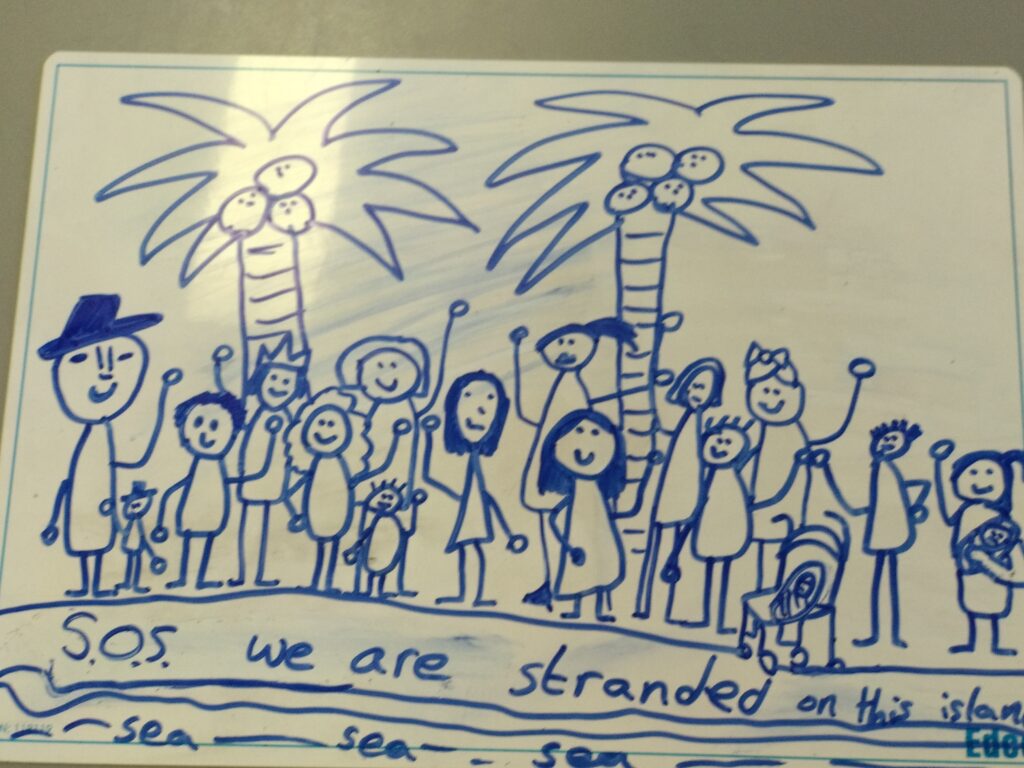Phase 1: Dialogues
Creating a Phase 1 Plan
If the overall plan for CEPNET in the school is that the project will operate over a 12 week period or 12 sessions, it is suggested that sessions 1-4 are focused on Phase 1.
The main aim of phase 1 is that the children have engaged in a process of dialogue and discussion and they have begun to focus on an area of research based on an interest.
The stimulus used in the first sessions should allow for an energetic and excited response.
Icebreakers can be used to kickstart each session, even when the games or activities are being introduced. A check-in process is recommended and if used at every CEPNET session, this can allow the children to become aware that they have now moved from their normal schoolwork into a separate part of the day.
One page lesson plans are available from the CEPNET resource section. Teachers can find support here at all times through this phase and are encouraged to check in with colleagues through the partner drop in section. In this section, teachers will be supported to reach out to teachers in other schools.
Parental consent forms will have been completed and collected where required. Sample forms will be available through the CEPNET resource section.
Considering the initial stimulus
In order to create a new dynamic within the classroom, the initial work with the students has a specific focus on generating a fun and enjoyable experience.
If possible, the lesson plans can make use of the SDG information resources compendium of games and activities. These can be reviewed in advance and integrated into the first sessions.
These resources and games are designed to spark debate and discussion regarding many of the themes associated with the SDGs.

Establishing Rules
The establishment of rules is a useful starting point for one of the initial sessions. The children must develop their own rules and seek to agree or develop consensus. These rules can be written up as a poster and can become a reference point as the project continues.
Where one child is in conflict with another during a classroom session, they should be encouraged to review the rules as they apply and where possible to restore the relationship using their own initiative.
Explaining the CEPNET Project
An introduction to the project is also clearly necessary.
An activity linked to this could be look at some of the CEPNET principles and values and get the students to focus on portraying these themes on posters, with each group looking to explain how they may be applied in practice over their participation within the project.
Explaining that they will also be communicating with peers in other countries represented an important element for children and young people who have already participated in CEPNET projects.
Introducing the idea of the Children’s Council may also create further interest and insight into how the project will view the importance of their voice.
Highlighting the support that they will receive from the adults in the room, but very much in the background, will also allow the students to understand that the phases will be child-led. Posters to indicate these values can be placed on the classroom walls to remind all of these important CEPNET principles.
Maintaining the focus of debate and dialogue
As the sessions get more involved, the focus can more towards discussion and debate regarding the manner in which the SDGs are present in their lives. Exercises can be built into lesson plans number 2 and 3, whereby smaller groups within the classroom can look to explore different themes. A world café approach can be modified for children and used.
World Cafe Method
A key feature of this approach is that the participants decide themselves when to move to another group. Hosts of each group are encouraged to develop specific themes.
Again, art can be used as a means of encouraging groups to express themselves in relation to themes under focus.

Role play and drama techniques can also be used to allow the children to further express their interests and concerns about SDG related issues and how they may affect them in their lives.
Arriving at the “Big Interest”
As these discussions continue into session 3, the aim at this stage is to encourage the children to start developing a “big interest”, i.e. a passion or a desire to learn more about a specific theme or issue. It could be linked to the products that they use every day and where they are sourced from, such as a sports jersey, pair of shoes or their mobile phone. It could be focusing on the level of recycling opportunities in their area, the presence of cycling infrastructure, the impact of the pandemic on older people, the nature of support for asylum seekers, and on and on.
The children should be encouraged to think as “big” as possible, but ideally during these sessions, they are starting to shape their “big interest” into a form that they can now start to see as a question. The next step is taking their interest and translating it into a research question. They can start to look at the nature of a research question or a hypothesis.
Facilitating the emergence of groups and/or individuals
As the students begin to formulate a specific interest, they can look to their peers in the class to see whether they share a potential focus. They may want to form a group and work together on Phase 2 and Phase 3. They may already be thinking of how they might carry out their research and their presentation.
As they get closer to this point, they should be encouraged to write down these thoughts and share them within the class. This might inspire others as they begin to formalise their interest into a research question.
Connecting with other schools
During each Phase, every effort should be made to facilitate interactions between the children in different schools. This may be planned as a synchronous activity and the technology is tested in advance, as well as the types of questions and answer session. There is a specific set of resources available to consider how best to build these connections.
Asynchronous activities may also be organised. These may be pre-recordings of children posing questions to their peers and in turn the responses.
During the CEPNET project, children found that the contact with children in other schools and countries to be a particular highlight. Even if they were communicating at a superficial level and not focused on the project themes, they expressed that these encounters were very memorable.
So it is important as part of the planning of each Phase that all plan for at least one structured engagement. As each school moves through the Phases, there will be increased opportunities for contact. Maybe some projects have clear overlapping potential, maybe there is an interest in podcasting in a number of schools or maybe the interest in student journalism can lead to joint initiatives across schools.
Documenting Phase 1
Developing the 360 degree model with student input (from the student perspective, the peer perspective and the teacher perspective) will be kick-started during Phase 1. This model will allow for each student to select an indicator from the CEPNET values list as well as from the competence framework.
Recording of activities can take place where appropriate. Where more than one class in the school are participating in the project, sharing of feedback can be organised from class to class. Where a particular student is interested in being a “class reporter”, there is scope for appointing one of the students as a child journalist, who will document the progress of the debates and continue through the other Phases of the project.
A selection process for the student council can be discussed and agreed so that the selection can take place in Phase 2
A review session will also take place between teachers, principal and researchers to examine all learning points. The end point of Phase 1 involves all class members with a first version of their “big interest” being ready to be shaped into a research question.

